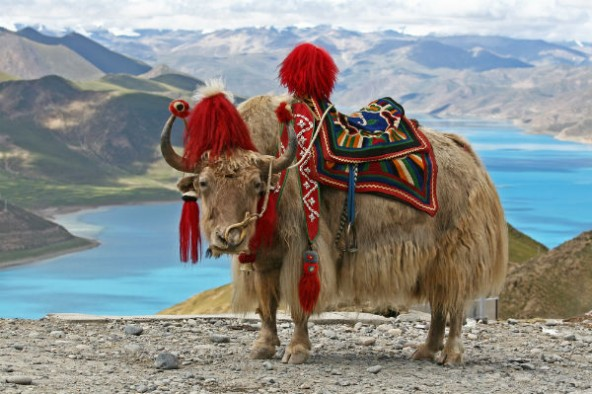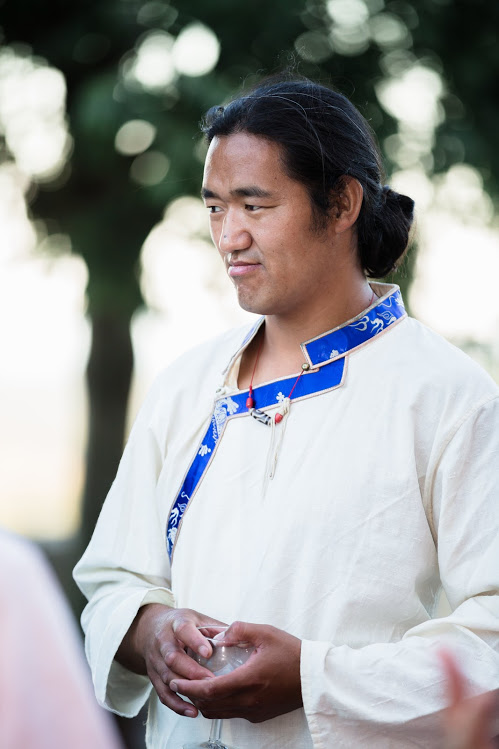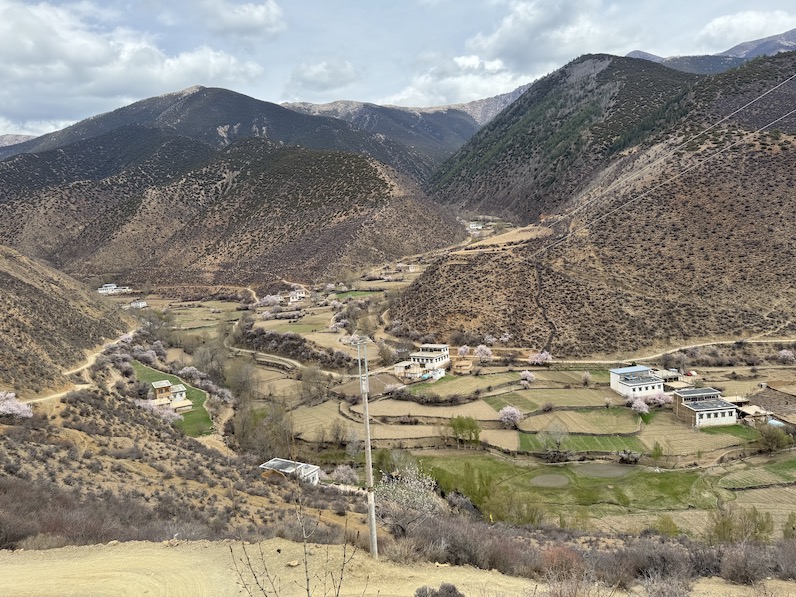
Outside of Tibet, the yak gets a lot of flak.
Visitors to Tibet have often sampled so-called yak butter tea, a drink that can taste super sour in parts of the plateau where fresh butter is hard to come by (see this post for more).
Tourists may also be familiar with the highly-decorated white yak. You sometimes find these looking lonely chained up outside sites of touristic interest.
There are various misunderstandings here.
Firstly, yak butter, milk, cheese etc. is actually the product of the dri འབྲི་, which is the female of the species. The yak is the male beast of burden, a massive, sure-footed creature that can carry huge loads, even over snow and ice.
Secondly, the white yak is a rare animal, hardly ever used for carrying goods. Traditionally, these prized beasts were trained and offered to high lamas for transportation – a great privilege for a yak. Brown and black-haired yaks are much more commonplace, and these are the most abundant, useful and well-loved of all animals in Tibet.
Yaks were first domesticated nearly 4,000 years ago on the plateau. They thrive at the highest altitudes, and historically they have been the chief purveyors of wool, salt, tea and other goods to India, Nepal and China, as well as the means by which cotton, silk, glass and other finished products have reached Tibet.
The yak and its female counterpart, the dri, provide Tibetan people with all the meat and dairy products they need to supplement their diet. We say that there is no meat like yak meat, and here in Oxford, our pets appear to agree (when we recently brought some back from Tibet, our largely unadventurous house cats went wild for the stuff).
What is little known is how much of the yak is used in daily life in Tibet. We use its hair to make tents and rainwear, and these are strong enough to easily withstand the winter blizzards of Tibet’s northern desert regions. We also make ropes and bags out of it.
Yak skin is used for making boots, saddlebags and boats. Its bones are used to make combs and buttons. Its tail is used as a duster, and a little-known fact is that years ago yak tails were exported to the USA to make Santa Claus beards (true story! see this New Yorker story from 1947 about the shortage in supply after Tibet’s occupation by the Chinese).
The Buddha and other early leaders of Buddhist practice advocated for a suffering-free diet, but in many parts of Tibet, where the climate is cold and dry, people have little alternative but to consume meat and dairy.
When a yak is killed (often there is no need, and the yak is simply retired – they usually survive about 30 years), Tibetan people make sure to use every last bit of it. One yak can provide so much, and the cost of this single life seems bearable when you consider how many lives are lost for the consumption of chicken, fish, and especially creatures of the sea.
The yak probably qualifies as one of the most useful animals in the world, and it the gift that has enabled human survival at high reaches of the Tibetan plateau. How much more it provides than mere butter! (I’ll say it again: tastes great when it’s fresh).
#tastetibet #tibet #tibetan #yaks #yakhair #buttertea #yakbutter #yaktails #dri







